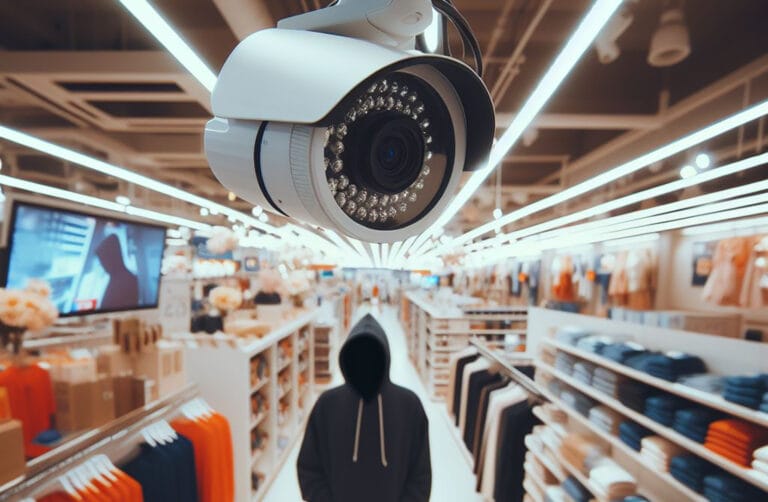Summary
Speed, security, and capacity are just some of the things those investing in AI-powered video surveillance must consider. Read on to learn the rest.
One might think retailers started the new year feeling festive after wrapping up a robust 2023 holiday shopping season. U.S. Census Bureau data shows that despite the economic drags of rising inflation and interest rates, retail sales during the holidays increased 3.8% over 2022, hitting a record $964.4 billion. But a concurrent trend—rising retail shrink—is eroding retailers’ profitability and feelings of good cheer.
Retail shrink, or shrinkage, describes inventory loss that stems from various internal and external factors. Top among them is theft, which can occur at all stages of the retail supply chain, from the point of manufacture to the point of sale. That includes shoplifting by customers, theft by employees, vendor fraud, and organized retail crime (ORC).
The latter issue has been particularly concerning for retailers lately, and not just because of its scale and frequency and the millions in financial losses it causes. In a 2022 retail security survey from the National Retail Federation (NRF), 81% of respondents reported that ORC offenders had grown more violent. And in NRF’s 2023 survey, 67% of respondents said they were seeing even more violence and aggression from these perpetrators compared with a year ago.
To combat shrinkage, defend against both brazen and stealthy ORC actors, and create a more secure environment for customers and employees, retailers of all sizes are stepping up investments in video surveillance solutions powered by artificial intelligence (AI).
The watchful eyes of AI video surveillance systems can be a powerful crime deterrent. They also provide compelling evidence for investigations and advanced analytics to enable more proactive security. Many retailers recognize that AI video surveillance can help them operate more efficiently, too, by giving them timely insight into many aspects of their operations, including how they manage inventory, staff their stores, and provide customer service.
The Data Deluge from AI-powered Surveillance
As retailers look to implement modern video surveillance solutions to enhance security and more, they need to make sure they have the right IT infrastructure in place to support them.
AI-powered video surveillance systems generate vast amounts of data, ranging from high-definition video feeds to metadata extracted through advanced analytics. As retailers deploy technologies like facial recognition, behavioral analysis, and object tracking, the volume, velocity, and variety of data escalate significantly. This surge in data necessitates storage solutions that can accommodate the unique demands of AI-enhanced surveillance.
Here’s a quick overview of some top considerations for retailers as they prepare to shift to more powerful and intelligent surveillance systems and look to maximize their investments:
1. Storage Capacity
This is the top consideration, hands down. Retailers need to ensure their storage capacity can keep pace with ever-growing volumes of unstructured data, including video footage and associated metadata. AI analytics generate additional data layers and demand storage solutions that can easily scale over time.
2. High Performance and Throughput
AI applications in video surveillance require high-performance storage solutions with fast read and write speeds. Quick access to data is crucial for real-time analytics and prompt responses to security events.
3. Retention Period and Compliance
Retailers must adhere to specific retention periods for video footage, which regulatory requirements often dictate. That means any storage solution a retail operation implements to support AI-powered video surveillance systems should facilitate long-term retention without compromising performance. Compliance with data protection regulations is essential to avoid legal and regulatory repercussions.
4. Redundancy and Reliability
Redundancy and reliability are crucial for preventing data loss in case of hardware failures. Implementing fault-tolerant storage solutions enhances data reliability and ensures continuous surveillance operation. Look for a solution that offers not only data backup but also fast recovery at scale.
5. Data Transfer Speeds
AI-powered surveillance systems with real-time analytics capabilities rely on rapid access to stored data. So, these systems need to be backed by robust storage that can support high-speed data transfer and keep pace with the continuous recording and retrieval of video data.
6. Compatibility with AI Workloads
Data storage solutions for AI-driven video surveillance should be optimized to handle the specific workloads associated with AI analytics. This includes the efficient retrieval of video segments for analysis, storing metadata, and parallel processing to accommodate the demands of multiple AI algorithms running simultaneously.
7. Edge Storage for Decentralized Systems
Many retail environments have distributed surveillance systems and need to run video analytics at the edge. With edge storage solutions, they can store and process data locally and reduce the need for constant data transfer to a centralized location.
8. Cybersecurity Measures
AI video surveillance in retail presents several cybersecurity concerns, including data privacy issues, unauthorized access to data, and malware infections. Encryption, robust access controls, and regular security updates are essential measures to help retailers safeguard sensitive video data. Another measure: using data storage designed to mitigate ransomware attacks by securing critical data from being altered or destroyed—and enabling a quick and complete recovery.
Make the Most of AI-powered Video Surveillance Investments with Pure Storage
Modernizing data storage goes hand in hand with implementing AI-powered video surveillance. Spinning disk drives aren’t the foundation that retailers can rely on to make the most of raw data footage in their war against shrink and threats like ORC and cyberattackers. Retailers should also strive to implement modern storage and video surveillance systems well before the 2024 holiday shopping season arrives if they want to be ready to drive up profits instead of counting unnecessary losses.
Pure Storage helps retailers and other businesses in the industry take crucial steps toward harnessing the full value of their data, including raw, unstructured data like video. Our solutions for data and analytics provide the tools and capabilities your business needs to meet modern security and safety demands; reduce risk for customers, employees, and your operations; and increase efficiency and profitability.






